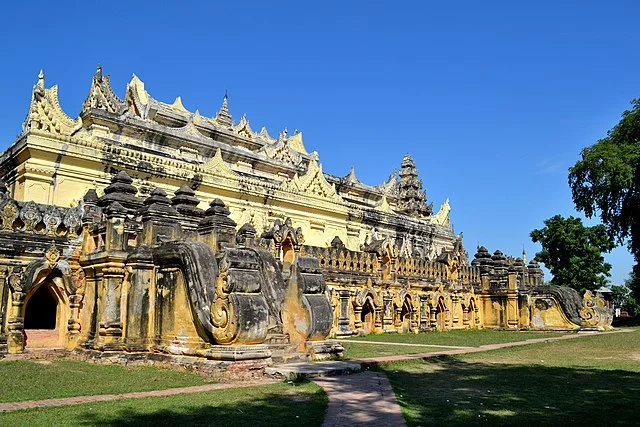Maha Aungmye Bonzan Monastery, a remarkable example of Burmese architecture, stands in the town of Inwa, Myanmar. Known for its distinctive design and historical significance, the monastery provides insight into 19th-century Burmese religious and architectural developments. Built during the Konbaung Dynasty, the monastery remains a prominent landmark today.
Get your dose of History via Email
Origins and Construction of Maha Aungmye Bonzan Monastery
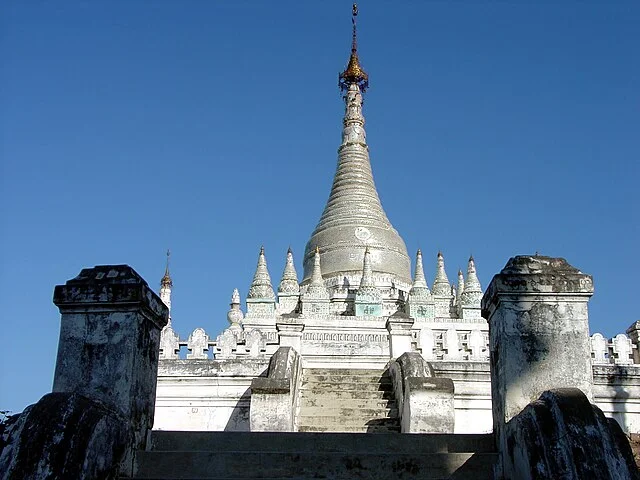
Maha Aungmye Bonzan Monastery, also called Me Nu Oak Kyaung, was built in 1822 AD. Queen Nanmadaw Me Nu, the chief consort of King Bagyidaw (r. 1819–1837 AD), commissioned the structure. She intended it as a religious and cultural center, reflecting Buddhist principles and royal patronage of monastic life. Architect U Thar, an acclaimed architect of his time, designed the monastery.
The Konbaung Dynasty (1752–1885 AD) supported Buddhism heavily, promoting temple and monastery construction. Maha Aungmye Bonzan reflects this royal commitment. Unlike many traditional Burmese monasteries built from wood, this structure used brick and stucco, making it one of the earliest masonry monasteries in Myanmar. This use of durable materials allowed it to survive numerous historical challenges.
Architectural Features of Maha Aungmye Bonzan Monastery
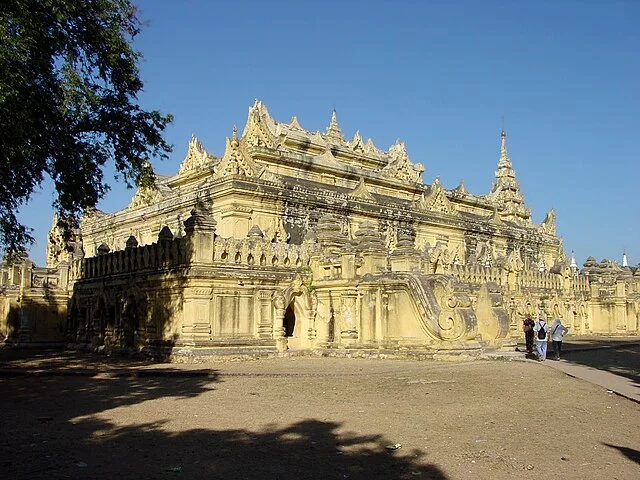
The architecture of Maha Aungmye Bonzan is unique for Burmese monasteries. It incorporates traditional Burmese monastic design with fortified masonry, combining spiritual and architectural elements. The monastery follows the typical Burmese tiered-roof design with a series of pyatthat (tiered roofs), symbolizing sacred spaces within Burmese religious architecture.
The monastery’s structural layout includes a central prayer hall, meditation areas, and living quarters. Intricate stucco details, including floral and mythical creature motifs, adorn the outer walls. These decorations highlight the skilled craftsmanship of Burmese artisans of the period. Additionally, the building’s interior features multiple Buddha images and statues that serve as focal points for worship.
Restoration and Historical Significance
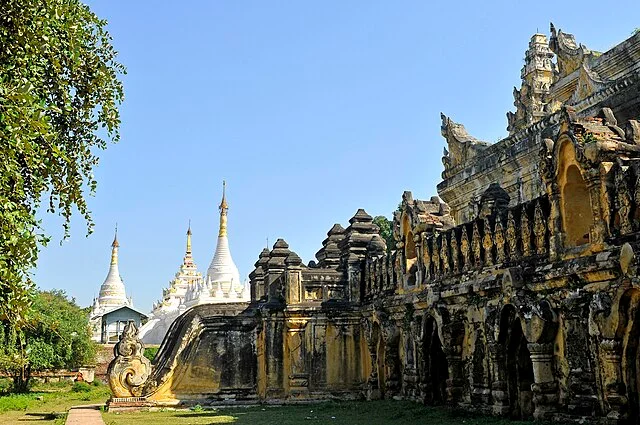
In 1838 AD, an earthquake struck Inwa, damaging Maha Aungmye Bonzan and other structures. Queen Me Nu funded its restoration shortly afterward. However, subsequent earthquakes have also impacted the structure. Restoration efforts have aimed to preserve its historical integrity and architectural details.
The monastery remains a valuable historical and cultural site in Myanmar. It reflects the royal patronage of the Konbaung Dynasty, architectural evolution, and Buddhism’s influence on Burmese culture. Today, Maha Aungmye Bonzan attracts scholars, historians, and visitors, contributing to a greater understanding of Myanmar’s rich heritage.
Maha Aungmye Bonzan Monastery in the Modern Context
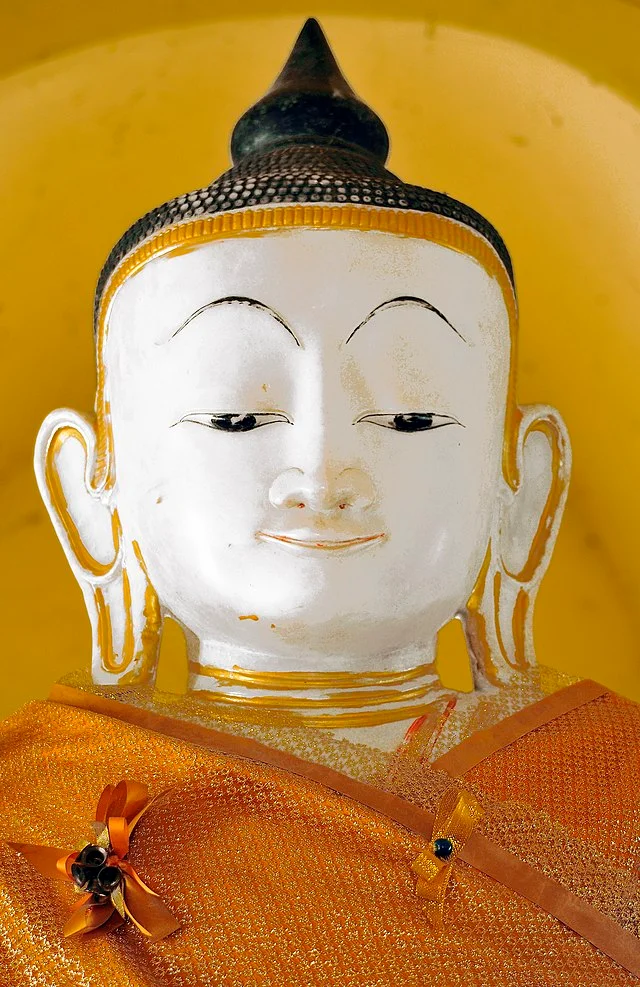
As a heritage site, Maha Aungmye Bonzan represents Myanmar’s enduring architectural and cultural legacy. It stands not only as a place of historical reverence but also as an example of 19th-century masonry that has endured through various challenges. The monastery continues to attract interest from those studying Southeast Asian history, architecture, and Buddhism.
In summary, Maha Aungmye Bonzan Monastery exemplifies Burmese craftsmanship, religious devotion, and royal influence during the Konbaung Dynasty. It remains a testament to Myanmar’s historical and cultural resilience, preserving a key chapter of the nation’s Buddhist and architectural heritage.
Source:

